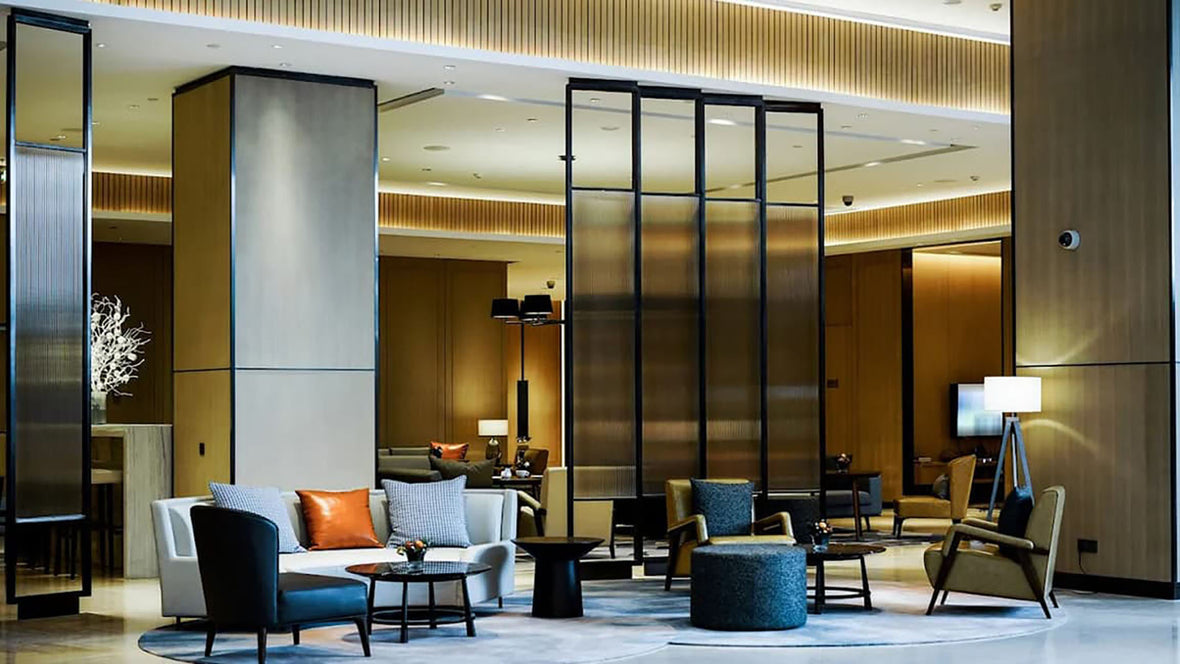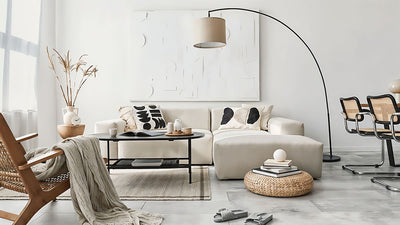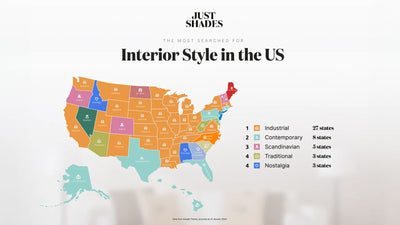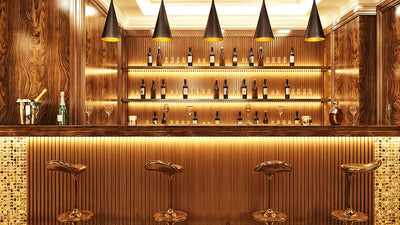
A Comprehensive Guide to Hotel Lighting
Hotels are more than just places to stay; they are experiences designed to create lasting memories. One crucial element that shapes the guest experience is hotel lighting. The right lighting can enhance the ambiance, comfort, and functionality of a hotel, leaving a lasting impression on guests.
In this comprehensive guide to hotel lighting, we'll delve into the basics of hotel lighting, explore lighting by specific areas, discuss various types of lighting, and emphasize the importance of lighting design.
Understanding Hotel Lighting
Hotel lighting is a multifaceted aspect of interior design that goes beyond just providing illumination. It plays a vital role in setting the mood, creating a welcoming atmosphere, and showcasing the hotel's unique character.
Using Natural Light
Natural light is a valuable asset in hotel design. It not only reduces energy consumption but also connects guests with the surrounding environment.
Large windows, skylights, and strategically placed mirrors can maximize the benefits of natural light, providing a sense of spaciousness and a connection to the outdoors.
Layering in Design
Layering is a fundamental principle in hotel lighting design. It involves combining different types of lighting, such as ambient, task, and accent lighting, to create a visually appealing environment. Layering allows for flexibility in adjusting the lighting according to various functions and times of day.
Design Placements
Design aesthetics play a significant role in hotel lighting. The choice of fixtures, lamp styles, and lighting placements can influence the overall look and feel of the space. Hotels often incorporate lighting fixtures that align with their design themes, whether it's modern, classic, minimalist, or eclectic.
Flexible Dimmable Lights
Dimmable lights offer guests the flexibility to adjust the lighting levels to their preferences. This feature is particularly useful in bedrooms and dining areas, where guests may want to create a cozy and intimate atmosphere. Dimming controls can also enhance energy efficiency and keep costs to a minimum.
Hotel Branding
Hotel lighting is an integral part of branding. The lighting design should reflect the hotel's brand identity, values and display its personality.
Whether a hotel aims for a luxurious, eco-friendly, or boutique image, the lighting design should align with these goals and resonate with the target audience.

Hotel Lighting by Area
Each area within a hotel has unique lighting requirements to cater to its specific functions and guest experiences.
Let's explore the different areas where lighting plays a crucial role.
The Entrance
The hotel entrance serves as guests' initial impression of the property as it sets the tone for the entire stay. Effective lighting in this area should be welcoming, with fixtures that highlight the architecture and create a sense of arrival.
Chandeliers and pendant lights can add a touch of warmth, allowing guests to feel relaxed as soon as they enter the hotel.
Bedrooms
Bedrooms are where guests relax and unwind. Lighting should be versatile, allowing guests to read, work, or simply relax in comfort.
A combination of bedside table lamps, overhead fixtures, and task lighting near workspaces is essential. Soft and warm lighting creates a cozy and inviting atmosphere.
Bathrooms
Effective bathroom lighting should serve both practical and aesthetic purposes. Lights around mirrors are essential for tasks like grooming and makeup application, ensuring precision and accuracy.
Additionally, soft and gently diffused lighting can create a luxurious and tranquil atmosphere in bathrooms reminiscent of a spa, promoting relaxation and well-being.
Corridors and Stairs
To ensure safety in corridors and stairwells, it is essential to maintain uniform and well-dispersed lighting.
Achieving this can be accomplished by incorporating a blend of wall-mounted fixtures and thoughtfully positioned recessed lights, which not only offer even and efficient illumination but also contribute to the visual appeal of these areas.
Restaurant
In the daylight hours, restaurant lighting can offer an inviting atmosphere for hotel guests. But in the evening, the ability to adjust lighting levels with dimmable fixtures and the inclusion of decorative elements sets the stage for an elegant and upscale dining experience.
Outdoors
Outdoor lighting plays a vital role in enhancing both the visual appeal and safety of an area. Well-placed lighting can highlight architectural features, landscaping, and pathways. Energy-efficient LED fixtures are often used for outdoor lighting to reduce environmental impact and maintenance costs.

What Are the Types of Hotel Lighting?
Hotels employ various types of lighting to create a diverse and engaging guest experience. Here are some common types of hotel lighting:
Ambient Lighting
Ambient lighting provides general illumination and sets the overall mood in a space. It typically includes overhead fixtures like chandeliers, recessed lights, or ceiling-mounted fixtures.
The color temperature and intensity of ambient lighting influence the perceived warmth and brightness of a room.
Task Lighting
Task lighting is focused and directed lighting that serves a specific purpose, such as reading, working, or grooming. Bedside lamps, desk lamps, and vanity lighting in bathrooms are examples of task lighting.
These fixtures should provide adequate illumination without causing glare or shadows.
Accent Lighting
Accent lighting is used to draw attention to specific areas, objects, or architectural features and can add visual interest and drama to the space.
Track lighting, wall-mounted fixtures, and adjustable spotlights are commonly used for accent lighting. It can also highlight artworks, decorative elements, or unique design features within the hotel.
Decorative Lighting
Decorative lighting serves both a functional and aesthetic purpose. It includes statement fixtures like chandeliers, pendant lights, and decorative wall sconces. These fixtures often become focal points in hotel spaces, contributing to the overall design theme.

Why is Hotel Lighting Design Important?
The significance of thoughtful hotel lighting design cannot be overstated. It directly impacts the guest experience, influences their perceptions, and contributes to the overall success of the hotel.
Here are some key reasons why hotel lighting design is crucial:
Improved Guest Satisfaction
Well-designed lighting enhances guest comfort and satisfaction. Guests should feel relaxed, at ease, and able to control the lighting to meet their preferences.
Lighting can affect the quality of sleep and overall well-being, making it essential for guest rooms.
Reinforcing Brand Identity
Hotel lighting plays a pivotal role in establishing and reinforcing the hotel's brand identity. It helps differentiate the hotel from competitors and communicates its unique character and values to guests.
Enhanced Energy Efficiency
Efficient lighting design reduces energy consumption and operating costs. Incorporating energy-efficient LED lighting and controls can align with sustainability goals, reduce carbon footprints, and demonstrate the hotel's commitment to environmental responsibility.
Immersive Guest Experience
Lighting can create memorable and immersive guest experiences. Whether it's the dramatic entrance lighting, the cozy ambiance of a restaurant, or the soothing spa lighting, well-designed spaces leave a lasting impression on guests.

Get Advice on Hotel Lighting Today
Hotel lighting is a dynamic and integral component of hotel design. By understanding the basics of hotel lighting and considering lighting requirements by area, you can recognize their importance for guest comfort and satisfaction.
Get in touch with a member of our team, and we’ll take you through some of our top hotel lighting recommendations.



